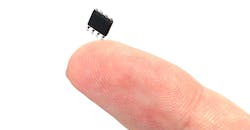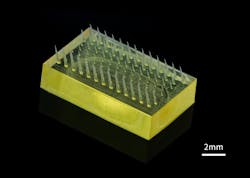As the rapid response to COVID19-induced needs continues to demonstrate, 3D printing and additive manufacturing possess great potential to fill a growing number of needs. From quickly ramping up to produce PPEs to enabling manufacturers to look for new ways to produce complex parts that pose challenges with other production approaches. This evolution will only intensify as progressive manufacturers work to find new applications suitable for this maturing technology. The ability to accurately produce smaller parts is a prime example.
The need for small parts is escalating significantly, John Kawola, CEO with Boston Micro Fabrication (BMF) tells IndustryWeek. “While high-resolution 3D printing can deliver very detailed parts down to the micron level, to be valuable for manufacturers, the printer needs to maintain the dimensional tolerances required in small, detailed parts,” he says. “We’re seeing a convergence of major trends as the lines between additive manufacturing and miniaturization begin to dissolve. There’s no question that additive manufacturing starts to lose its appeal as parts get smaller. Challenges with precision and accuracy have stymied innovation for engineers and manufacturers looking to develop small, high-resolution parts.”
According to Kawola, while additive manufacturing technologies have only been able to achieve consistency within the 50µm range, microArch can precisely and accurately deliver features that are much smaller. “We’re already seeing strong traction in industries like electronics, medical devices, MEMS, filtration, drug research and others that require highly precise parts with small features,” he says. “As devices and parts get smaller, the need for accuracy and precision grows even more important and has been difficult to achieve. The requirements of these parts are often beyond the reach of current AM technologies, and in many cases, beyond what can be achieved in micro-injection molding or micro-machining, which also tend to be very expensive.”
According to Kawola, the goal with microArch is to help manufacturers solve ongoing issues with miniaturization. “The trend to manufacture even smaller mechanical, optical and electronic products, medical devices, and other high-value parts—continues to be strong in many markets,” he says. “But one of the limiting factors of miniaturization is the inability for traditional manufacturing methods, such as injection molding or CNC machining, to effectively and economically produce smaller parts. Other advances in additive manufacturing have fallen short of requirements. microArch changes that. The technology addresses the need for high-value parts that require ultra-high-resolution, accuracy and precision down to the micro scale, while exceeding the economics of traditional methods.”
About the Author
Peter Fretty
Technology Editor
As a highly experienced journalist, Peter Fretty regularly covers advances in manufacturing, information technology, and software. He has written thousands of feature articles, cover stories, and white papers for an assortment of trade journals, business publications, and consumer magazines.

